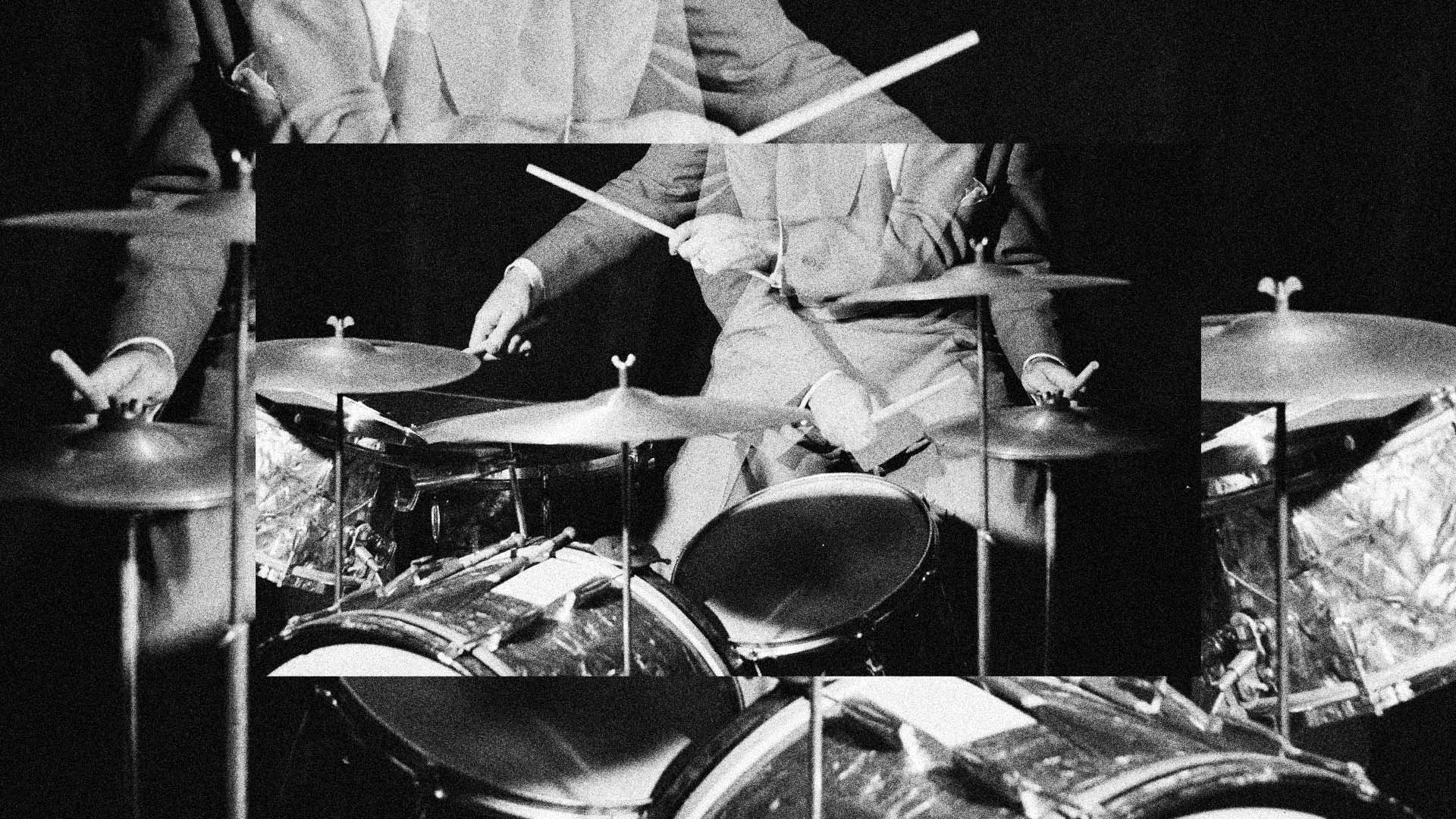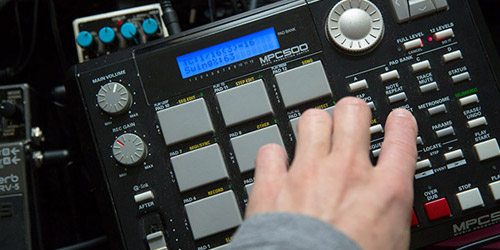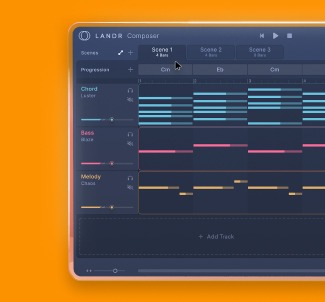
What is Swing? The Basics of Jazz Rhythm Explained

Have you ever listened to jazz or blues and wondered why it sounds so different from other genres? Part of the reason why is because this music is played with a swing feel.
Swing is so prevalent in jazz that an entire subgenre literally cropped up named swing in the 1930s—typically consisting of big orchestral jazz bands that played up-tempo ballads.
But, swing as a rhythmic concept has grown well beyond its early-jazz roots—if you listen closely, tons of modern music like hip-hop and R&B make use of swing rhythms.
Today modern producers obsess over DAW swing settings and idolize beat-making pioneers like J Dilla who utilized electronic tools to create electronic variations of swing.
If you want to add a bit of skip to your beats and make tracks that’ll get your audience’s heads bobbing–you might need to incorporate a bit of swing into your music.
In this article, we’ll learn about the music theory and history behind swung rhythms and we’ll explore a few ways you can use swing in your songwriting.
Let’s dive in!
Theory guides, production tips, new free plugins, gear guides and more—delivered weekly
Keep up with the LANDR Blog.
What is swing?
In music, swing refers to a specific way of interpreting rhythm where eight notes are played like triplets to create a galloping sound. Swing also refers to a genre of early jazz music that heavily used this style of rhythm.
Swing and jazz are deeply connected—jazz artists from the 1930s coined the term and most jazz from the 1930s up until the 1970s was exclusively played using a swing feel—that includes everything from traditional New Orleans jazz to be-bop.
Swing music theory
To understand swing you need to understand a little bit about music theory—particularly the difference between eighth notes and eighth note triplets.
That’s because swung rhythms are written in music notation as eighth notes, but in reality they’re played as though they’re triplets with a rest in the middle.


Essentially, the music notation draws an equivalency between these ways of writing a swung rhythm.

Swing emphasizes the backbeat
There’s a bit more to swing it than just that—Beethoven’s 9th symphony used very similar rhythms that were notated as eighth note triplets, but this music is not considered to be swung.
Instead, these triplets were played more like a dotted eighth note barred with a sixteenth note. It’s a subtle difference, but if you listen to the way Beethoven’s 9th gallops, it’s a different feel that doesn’t swing.
Movement two from Symphony No.9 is a good example of this phenomenon. Listen closely to how straight the orchestra plays its triplets.
There’s a difference in timing between how an orchestra plays and feels a triplet, especially when the middle note gets a rest, versus the way a jazz player will play a set of swung eighth notes.
This difference in feel is due in part to variations in articulation that jazz players use and its heavy emphasis on the backbeat—an accent falling on the two and four—that jazz music is famous for.
Classical music emphasizes the one and three counts of a 4/4 measure, making it impossible to swing since the rolling, galloping feel of swung music naturally emphasizes the two and four.
Swing feel is an artistic decision
Truthfully swung rhythm defies music theory, in that you can’t really notate it properly on the sheet.
True to its rebellious, “low-brow” roots, the way a musician plays swing really is an artistic choice.
Once you develop an ear for hearing swing in a piece of music, you’ll notice how different drummers play swing differently by moving the emphasis and timing of the eighth notes around.
Jazz drumming legend, Art Blakely puts on a masterclass of swing music in his bluesy track Moanin’—his drumming embodies a more classic swing feel with evenly spaced eighth notes that fit perfectly into a swung pattern.
But other drummers honed their own sound and style of playing swing.
Elvin Jones, for example, is known for having a very tight swing feel—often playing the off-beat quarter notes slightly late and closer to a sixteenth note.
Elvin’s swing style is a bit more jarring and sounds like nearly straight sixteenth notes—almost like Beethoven!
If that’s confusing, just listen to his track “Half and Half” and compare it to “Moanin”—both tunes are played swung—but the two drummers sound completely different.
Playing “in the cracks”
This phenomenon of playing around with the timing of swing rhythms was discovered and pioneered during the be-bop and hard-bop era of jazz music.
Drummers, like Elvin Jones, who perfected a specific swing feel, somewhere between fully swung and fully straight were described as playing “in-the-cracks”.
This is a term producers and artists use today to describe a particular way of playing.
Essentially, playing “in-the-cracks” means the swing feel is played somewhere between a triplet and an eighth note.

So an in-the-cracks groove will rhythmically fall somewhere between the above ways of playing within two-quarter notes.
If you ask a drummer to play more in the cracks, you’re asking the drummer to adjust their playing to be somewhere between swung and straight–a skill that many drummers will spend hours if not entire careers perfecting.
In-the-cracks and hip-hop
Producers like J Dilla and modern drummers like Chris Dave and Karriem Riggins took inspiration from these jazz drumming roots and re-invented the hip-hop feel.
Dilla was a master at putting hip-hop rhythms “in-the-cracks” to create a genre-pioneering style of hip-hop beat making.
Riggins and Dave are masters of that Dilla-esque feel that took well-known hip-hop grooves and twisted them with off-time, “in-the-cracks” snare hits that still sound somewhat robotic and straight.
It’s a fine line to find a swing feel that sounds good, but today’s jazz drummer is definitely spending time perfecting this new modern way of feeling swing and hip-hop grooves.
Listen to how Dave is constantly playing around the beat—he’s the reason why I say drummers turn their variations on swing into an artistic decision.
Swing in house, techno, breakbeats and other electronic music
Swing isn’t exclusive to jazz, blues, or hip-hop. It’s found its way into electronic music as well, shaping the rhythmic patterns in genres like house, techno, and breakbeat.
The infusion of swing into electronic music adds a distinct human touch and a danceable groove to the otherwise quantized beats.
In house music, the swung hi-hats and snares create a syncopated rhythm that complements the steady 4/4 kick drum, contributing to the genre’s infectious, dance-inducing nature.
A classic example is Kerri Chandler’s “Atmosphere,” where swing creates a captivating interplay between the percussion elements.

Kerri Chandler - "Atmosphere"
Techno, on the other hand, utilizes swing more subtly, often applied to hi-hats, shakers, or other percussive elements to create an engaging sense of movement within the track.
Listen to the rumbling kicks and bouncing rides in Jeff Mills’ “The Bells” for a taste of swing’s impact on techno.

Jeff Mills - "The Bells"
Breakbeat, with its roots in hip-hop, relies heavily on sampled drum breaks from groovy and swinging funk tunes to give the genre its characteristic drum sound.
The syncopated rhythms in tracks like The Prodigy’s “Break & Enter” showcase the power of swing in electronic music.

The Prodigy - "Break and Enter"
To incorporate swing into your electronic productions, start by experimenting with your DAW’s swing or groove settings.
Adjust the swing percentage to alter the rhythmic feel, and apply it selectively to different elements within your drum patterns.
Remember, the key to swing in electronic music is to strike a balance between mechanical precision and human-like imperfections, so don’t be afraid to play around and find the sweet spot that brings your tracks to life.
How to play swing rhythms
Alright, you’re probably wondering how you can learn to feel and play swing rhythm yourself.
The best way is with practice—you need to listen, play along with and even transcribe the great swing players from jazz and blues music.
That track from Art Blakely shared earlier is a great one to jam with—since the shuffle rhythm used throughout fully outlines the swing pattern.
With that out of the way, here’s three things to keep in mind when learning how to play swing rhythms.
1. Chew to-bacca
There’s a jazz joke out there that goes something like “why don’t blues players smoke cigarettes? They like to chew to-bacca, chew to-bacca, chew to-bacca”.
The punchline here is playing on the sound of swung eighth notes, with the “bacca” part of the phrase emphasizing the offbeat.
So next time you’re trying to play a swing rhythm, keep that phrase in mind and say it to yourself as you play.
The Chew Tobacco Rag might help you with visualizing this rhythmic phrase too.
By the way, smoking and chewing tobacco is really really bad for your health, we don’t endorse it at all.
Tobacco use killed so many great jazz players, so use this phrase but stay away from that stuff!
2. Spang-a-lang
Spang-a-lang is another phrase that drummers use to interpret and explain the feel behind swung jazz.
This onomatopoeia refers to the sound a jazz drummer’s ride cymbal makes when playing the most basic of swing grooves.
If you ask a drummer to “spang-a-lang” they should know what you’re referring to.

And if you’re trying to learn to swing on the drums, keep this one in mind and try playing variations of it on the ride and with fills on the snare and kick.
3. Practice triplets with a backbeat accent
If you’re really struggling to wrap your head around swing feel, you need to go back and practice clapping or playing your triplets.
The best way to practice triplets to learn swing is by placing an accent on the backbeats found on the two and four-count of a 4/4 bar.
Swingin’ away
Swing music is a huge part of modern music’s cultural lexicon—it’s the basis for rhythm in jazz and blues, the two grandfather genres that gave birth to rock and roll, R&B and hip-hop.
So it’s super important for musicians and producers alike to learn, understand and feel swing rhythms in their playing, songwriting and music productions.
Now that you know a little bit about the history of swing and you have a bit of context around learning it, go find some jazz records and find a swing feel that inspires you!
Gear guides, tips, tutorials, inspiration and more—delivered weekly.
Keep up with the LANDR Blog.







